There is also a plan with an airline ticket.
Ueno Park : From exquisite ramen to the glorious Toshogu Shrine
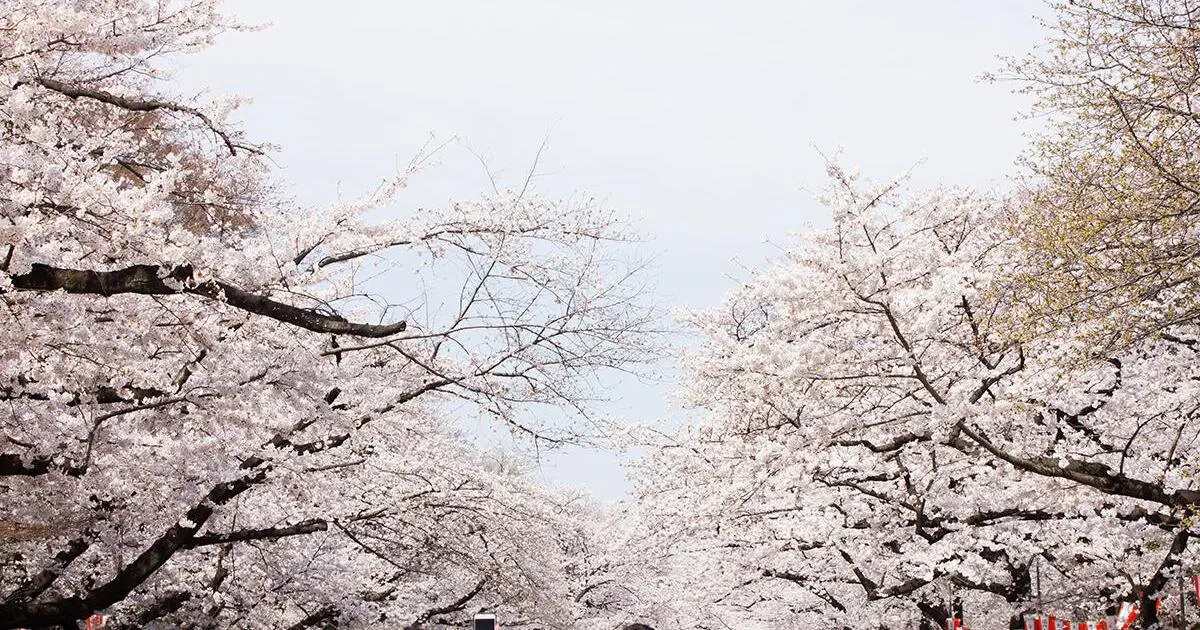
In this article series, NOHGA HOTEL introduces how to experience the neighborhood of Ueno.
Being deeply connected to a place: That is, to know more of the landscape features, events, and history consisting it, both tangible and intangible.
As our first topic, we picked Ueno Park, a symbolic place which cultivated the history and culture of this particular city.
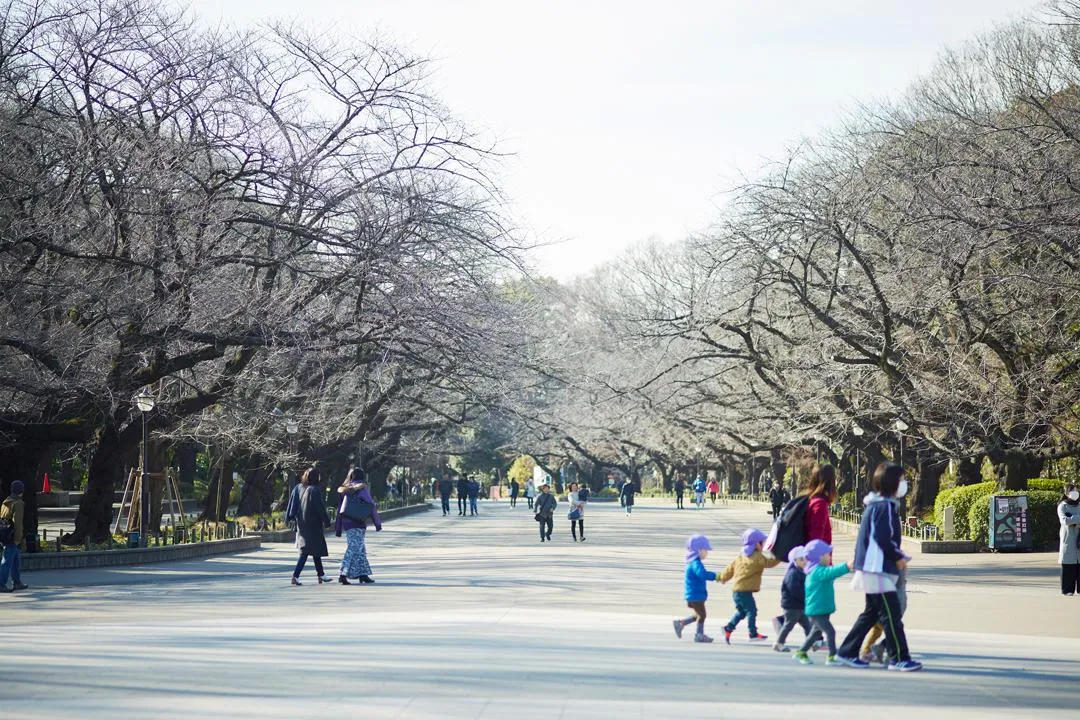
Ueno Park:
The world's leading hub of art and culture,
first park in Japan,
consisting of renowned museums and zoo.
Why not take a leisurely stroll around Ueno Mountain?
Sprawling across Ueno Mountain, which is located west of Ueno Station, is Ueno Park - the first park to open in Japan in 1876. It is also where you will find the spacious grounds of Toeizan Kan'ei-ji temple, which was built in 1625 on Ueno Mountain; it is located northeast of Edo Castle, and was constructed as a kind of Demon's Gate to ward off evil spirits believed to come from that unlucky direction. The temple was built to pray for the peace, welfare and tranquillity of the Tokugawa Shogunate and common people.
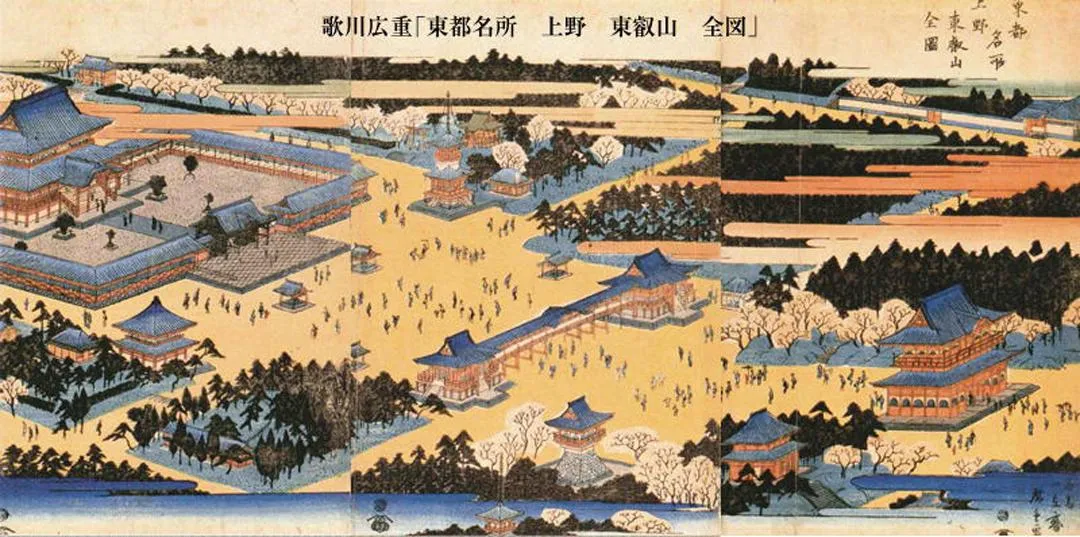
Hiroshige Utagawa "Toto Meisho Ueno Toeizan Zenzu"(Reference website)
Alas, during the Boshin Civil War from1868 to 1869, in which Imperial and shogunate forces fought each other, Ueno became a battleground for one of the local clashes between the two sides, and most of Kan'ei-ji Temple was destroyed by fire.

Battle of Ueno (Reference: Wikipedia "Battle of Ueno(Japanese)")
It was a Dutch military doctor, Dr. Anthonius Franciscus Bauduin, who drove the efforts to open a park at the site of Kan'ei-ji Temple.
Dr. Bauduin petitioned the Meiji government to build a park on the lush natural grounds of Ueno Mountain. More than 140 years later, Ueno Park is continuing to evolve as a hub of art and culture, featuring a museum, art museum, zoo, university, and many other outstanding cultural facilities and historical architectural sites that you won't find anywhere else in the world, nestled among the verdant and abundant forest grounds.
Exquisite lunch of ramen noodles
made using only slowly-cooked duck,
Welsh onions, and water.
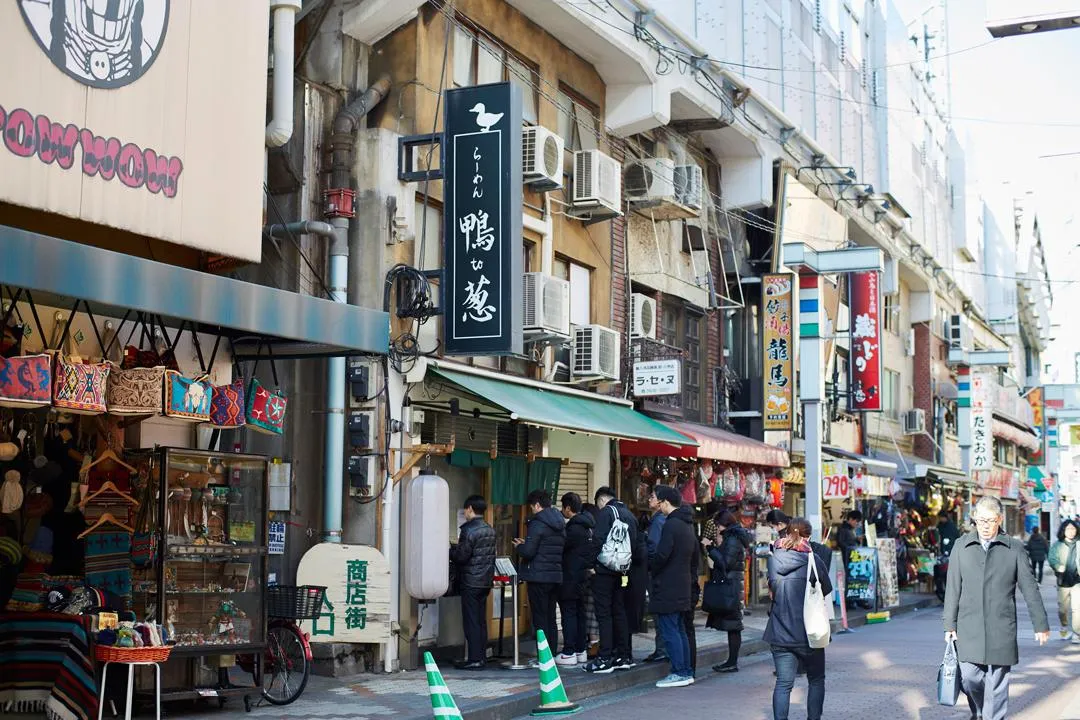
After spending a leisurely morning, why not have some lunch at the nearby Ameyoko Shopping Street in front of Okachimachi station? This lively shopping arcade runs along the elevated JR railway tracks between Ueno and Okachimachi stations. It's also where you'll find the extremely popular ramen noodle shop, Kamo to Negi (duck and Welsh onions).
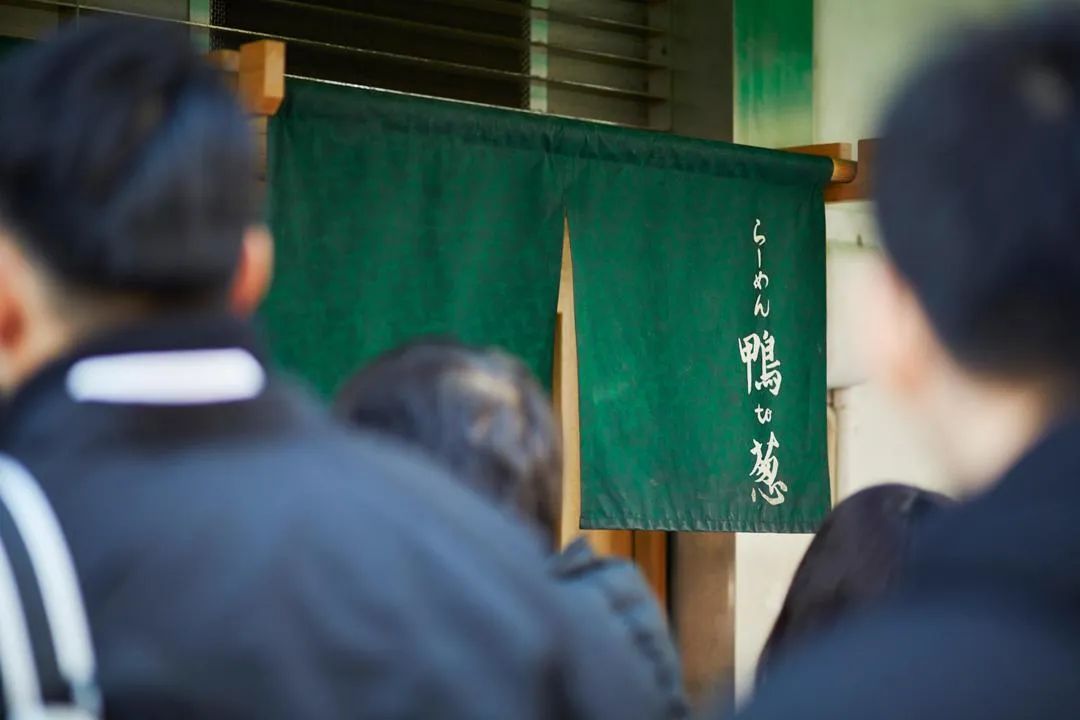
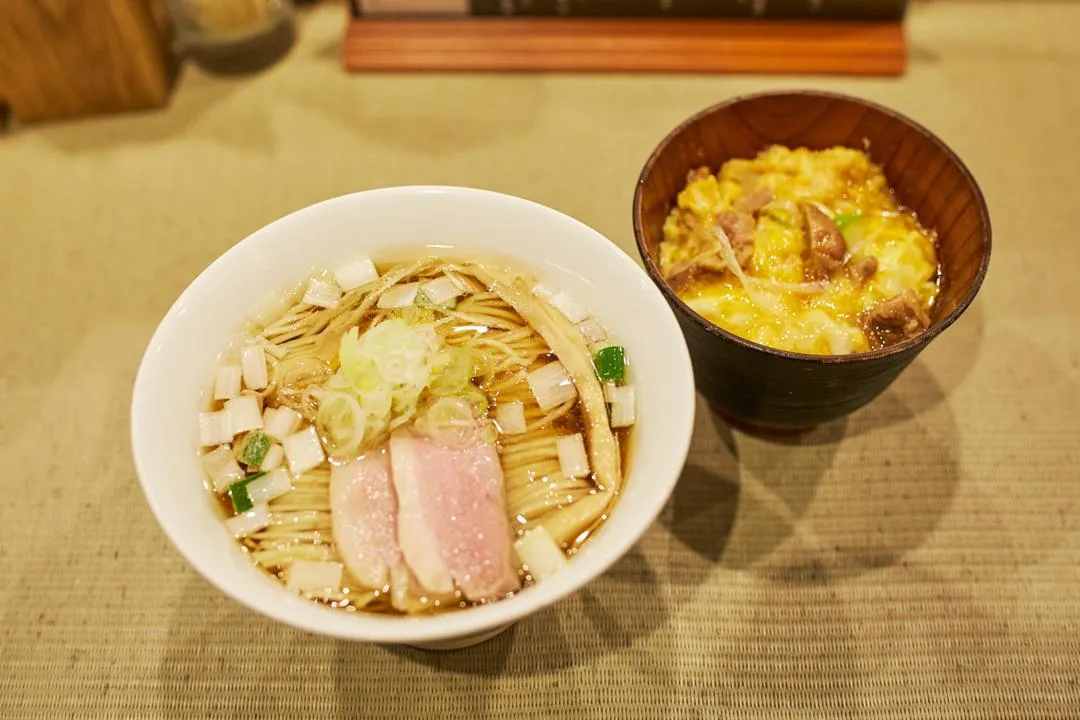
As per the shop name, the ramen here is made using only duck, Welsh onions and water; the duck is slowly cooked over two days to produce a clear soup that is simply sensational. Each morning, the chef selects only the finest domestic aigamo ducks (cross between a mallard and domestic duck), which are specially ordered fresh from the farm. Only pure water without any chemical seasonings is used to maximize this premium ingredient, and draw out the innate umami and richness of the duck.
Garnishing the ramen noodles are not the usual slices of char siu roasted pork fillet, but a confit of melt-in-your-mouth duck meat and roasted Welsh onions. Please don't pass up a chance to taste for yourself the elegant flavour of this ramen noodle dish, which is akin to the kamonanban dish of buckwheat vermicelli noodles in soy soup with duck meat and Welsh onions. And remember to also sample the side menu of nomeru oyakodon ("drinkable" chicken and egg on rice), made from aigamo duck, Welsh onions and syrupy egg.
The gorgeous Toshogu shrine
venerating the shogun who built the Edo era.
Now, let's finally start to stroll around the historical and cultural highlights of Ueno.
Pass through the Ameyoko Shopping Street and cross the Chuo-dori street at the intersection in front of Ueno Park, which will bring you right to the park's entrance. Continue on the path passing through the row of cherry blossom (sakura) trees on your left side. Since the Edo period, Ueno Mountain has been widely known as a prime place for enjoying cherry blossoms in bloom. The 1,250 cherry blossom trees here were planted after the war to restore the ravaged Ueno Mountain, and come spring they form a spectacular tunnel of sakura flowers.
Once you emerge from the tunnel of cherry blossom trees, you'll see in front of you an open space with a large water fountain that beckons you to slowly pass some time there. But not yet - first, take the side street on the left, and keep following it to the end where you'll find a hidden gem, the Ueno Toshogu shrine.
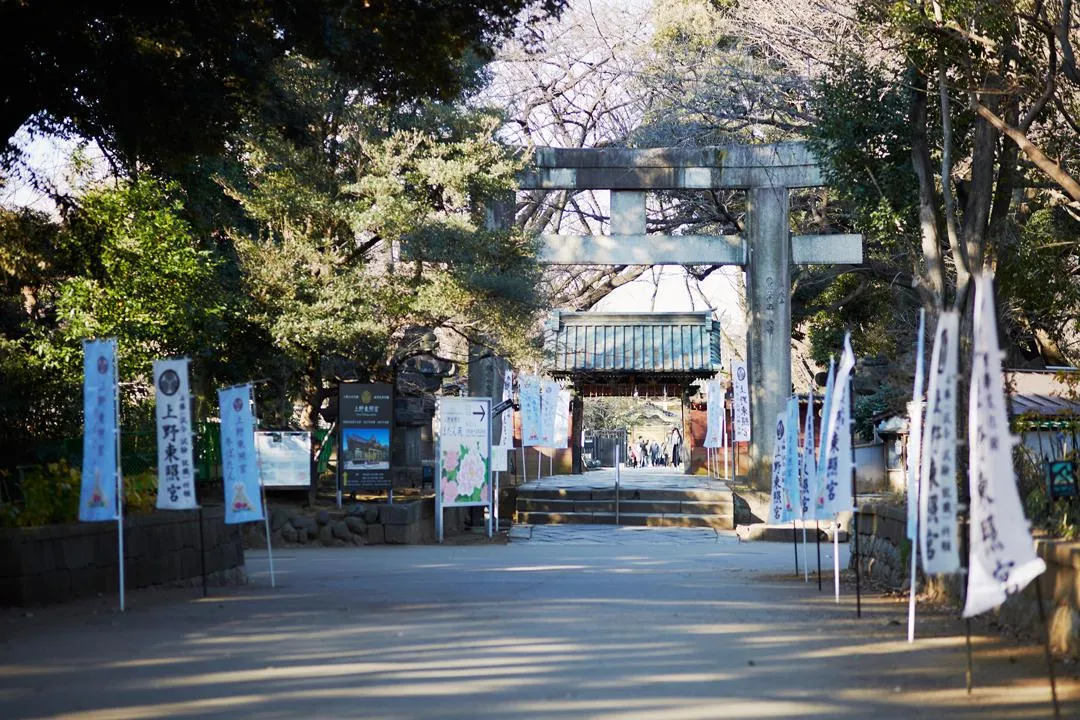
This is where the Toeizan Kan'ei-ji temple once stood; the temple was built to protect the town of Edo, and Ueno Toshogu shrine was erected within its grounds in 1627 as a shrine to venerate Tokugawa Ieyasu.
The path leading to the shrine is lined with stone lanterns that envelop you in a sense of soft serenity; on your right, you can also see the five-story pagoda from the former Kan'ei-ji temple.
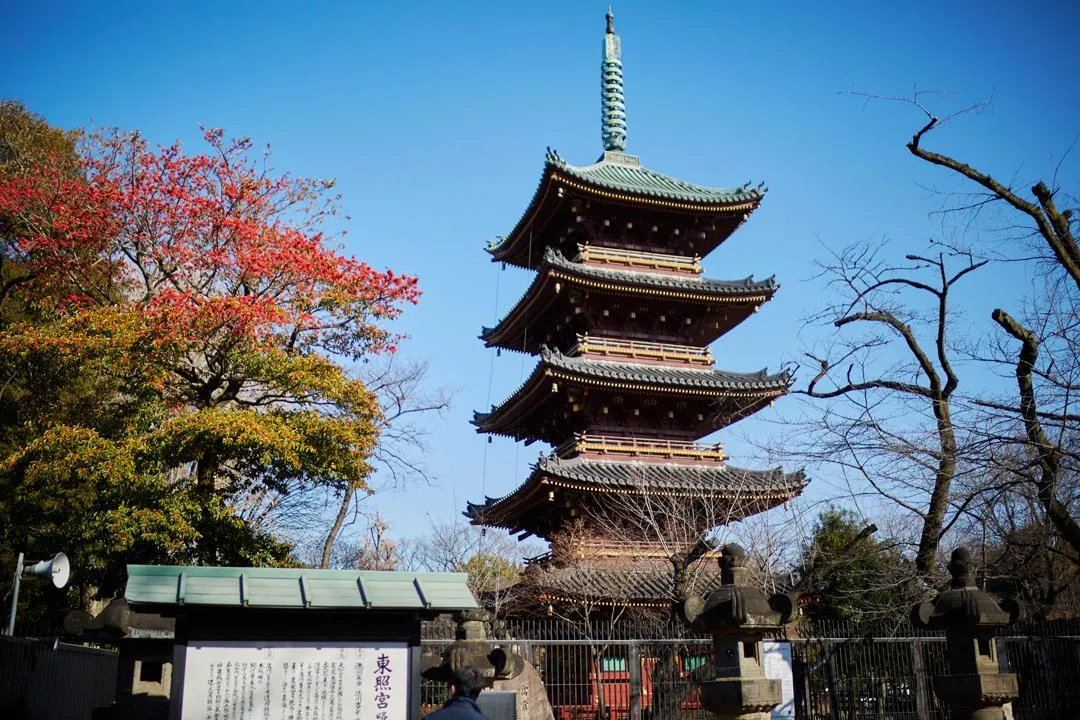
Wrapped in this mellow atmosphere, you'll feel like you've stepped back in time into the Edo period, barely believing you were in the hustle and bustle of the city only minutes before.
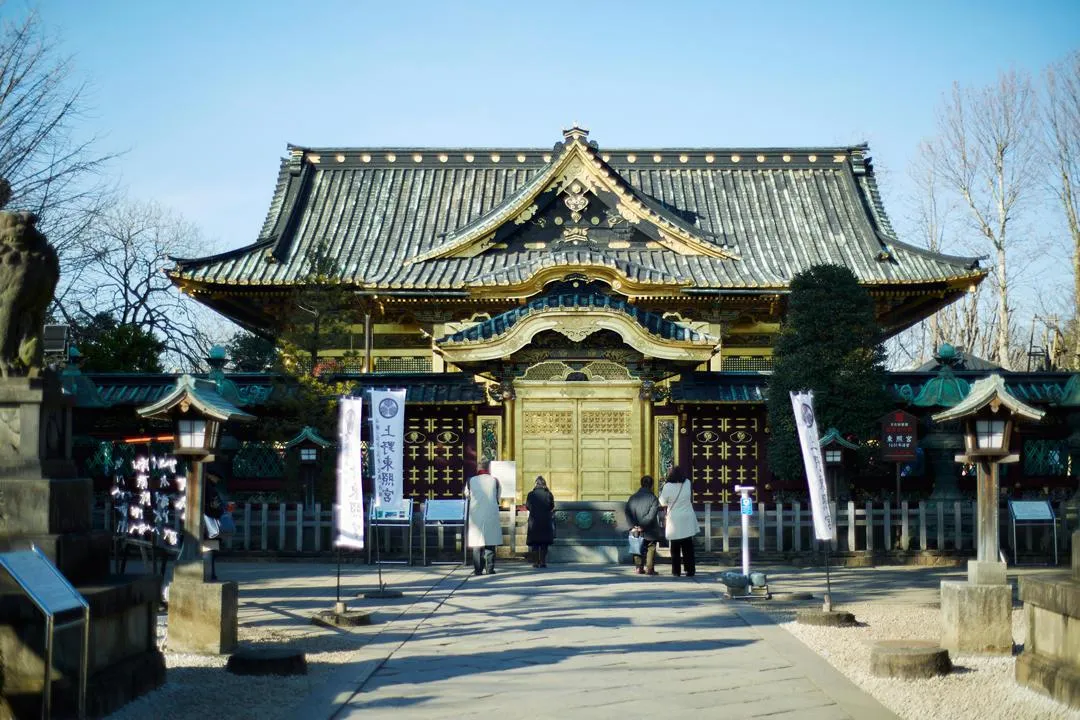
As you continue along the path, you'll come across the dazzling golden Chinese-style karamongate and shaden main building of Ueno Toshogu shrine. The karamon features richly-colored carvings of an ascending and descending dragon on either side, and the gorgeous exterior walls of the shaden are decorated with exquisite and elaborate engravings. Be sure to view the decorations up close to fully appreciate the consummate skills of the craftsmen who carved them back then.
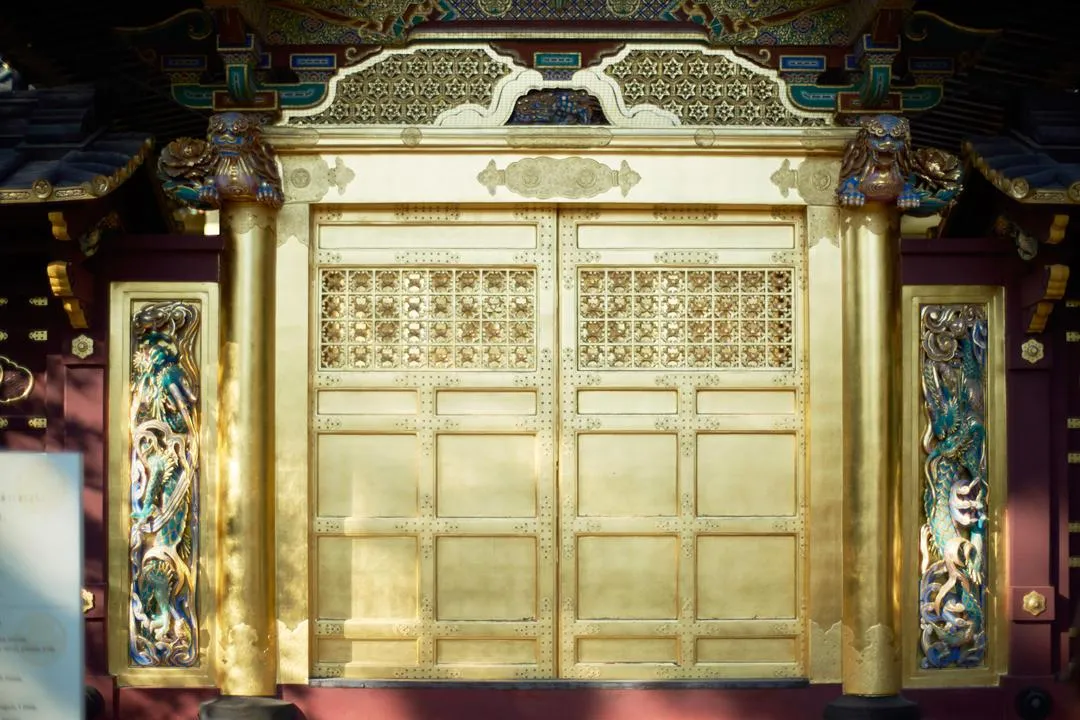
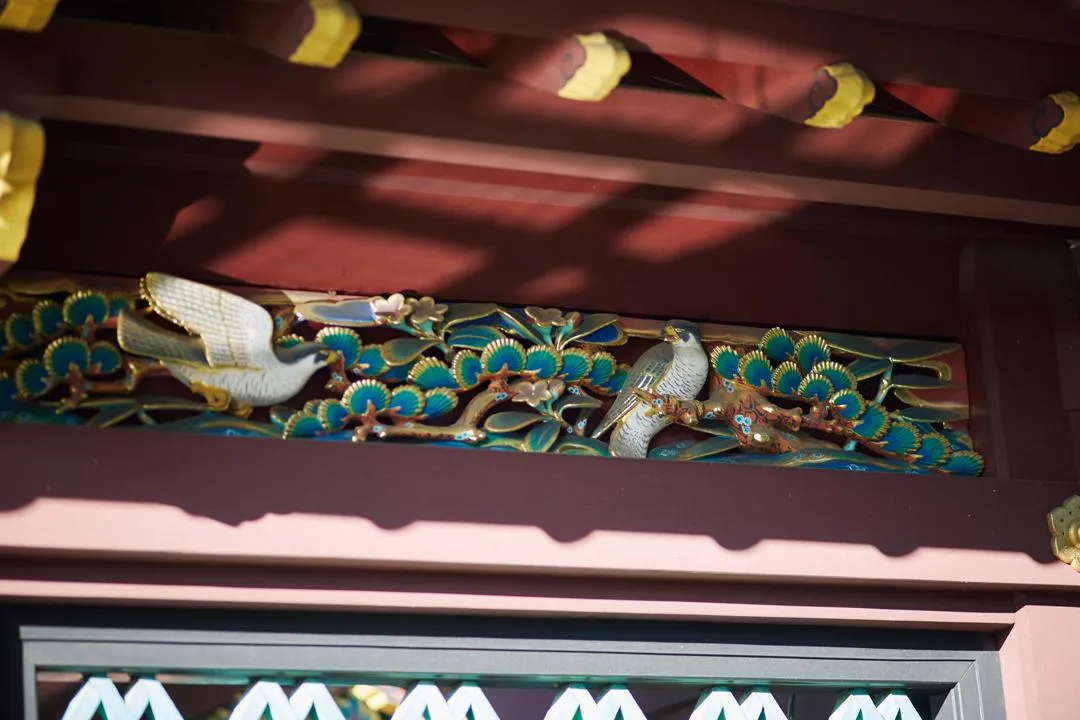
The current shaden was built in 1651, and it is an extremely rare remnant in Tokyo of such a building from that era.
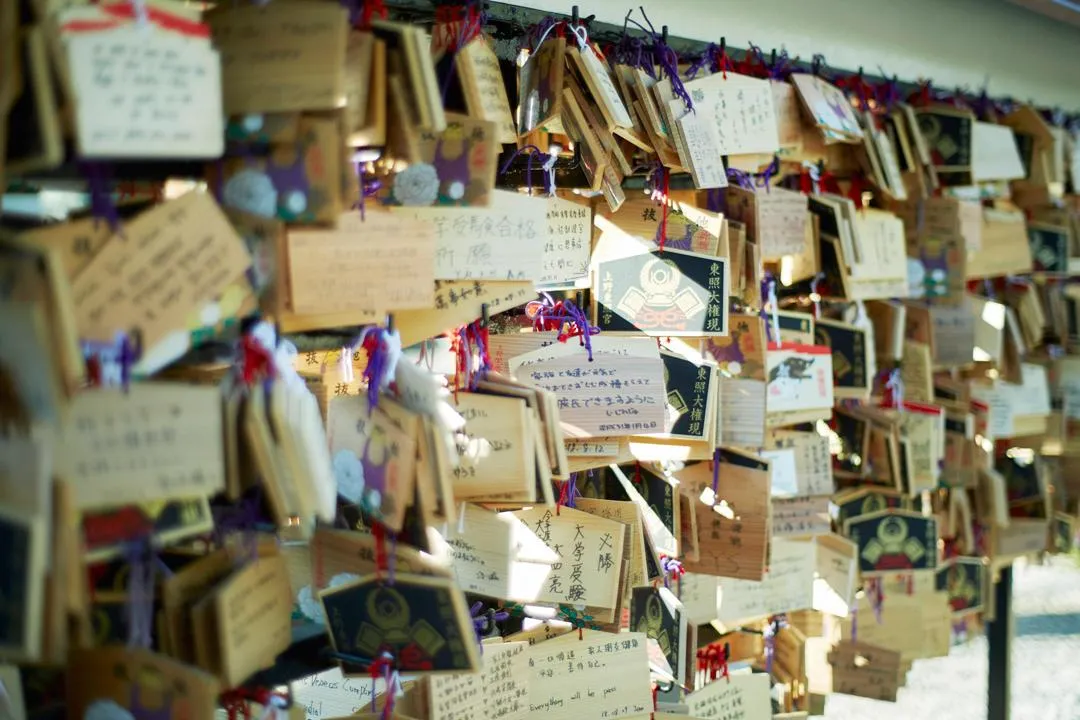
Next article "Ueno Park <Vol.2>: Time travel to the Edo Period through architecture and food"
"UENO WELCOME PASSPORTS" are now available for purchase at NOHGA HOTEL
For those interested in visiting many of Ueno's famous museums, landmarks, zoos, etc., this passport grants you one-time entry to 16 must-see spots in our area! A simple, economic, and fun way to thoroughly enjoy the tradition and history of this truly special, beloved area of Tokyo.
【Type A】Permanent Exhibitions Only: 2,000 JPY (tax incl.)
【Type B】Permanent and Special Exhibitions: 3,000 JPY (tax incl.)
*Through September 30th, 2019
Nomura Real Estate Development Group
TOKYO
Other prefecture

